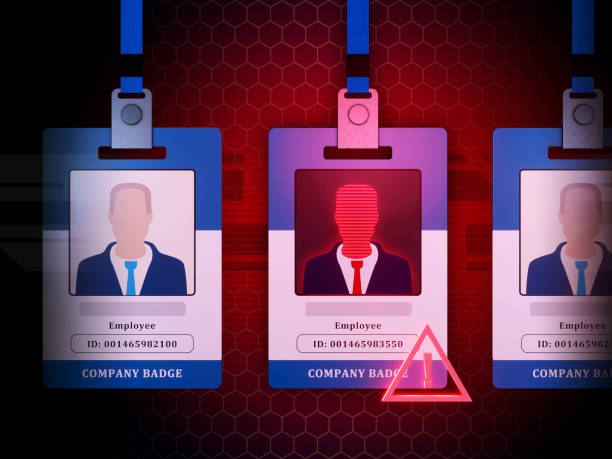When the Threat Is Within: A Guide to Insider Threat Incident Response

In the world of cybersecurity, we often focus on the external enemy—the sophisticated hacker, the nation-state actor, the relentless ransomware gang. But what happens when the threat comes from a place of trust? An insider threat—whether malicious or accidental—can be one of the most damaging and difficult security incidents to handle.
An insider threat is a security risk that originates from within your organisation. This could be a current or former employee, a contractor, a vendor, or anyone who has authorised access to your systems and data. The motivations can vary, from a disgruntled employee seeking revenge to a well-meaning but careless staff member who falls for a phishing attack. No matter the cause, the impact can be devastating.
Having a robust incident response plan specifically for insider threats is not just a good idea—it's a critical component of a comprehensive security strategy. Here's a breakdown of the key phases of an insider threat incident response process.
The Phases of Insider Threat Incident Response
An effective insider threat response plan follows a structured, multi-step process. While some organisations may adapt these steps to their specific needs, a standard framework often includes the following:
1. Preparation
The best defence is a good offence. Long before an incident occurs, you should have a solid foundation in place. This phase involves creating a dedicated insider threat program and defining a clear incident response plan.
- Establish a Team: Create a cross-functional team with representatives from IT, HR, legal, and executive management. This ensures that all aspects of the incident—from technical analysis to employee relations and legal compliance—are handled appropriately.
- Define Policies: Develop and communicate clear policies on acceptable use, data handling, and security protocols. Ensure employees understand their responsibilities and the consequences of violating these policies.
- Implement Proactive Monitoring: Use tools like User and Entity Behaviour Analytics (UEBA) to establish a baseline of normal activity. This allows you to more easily detect anomalous behavior, such as a user accessing files outside of their normal work hours or attempting to access data unrelated to their job function.
- Conduct Training: Regularly train employees on security awareness, including how to spot and report suspicious activity, whether it's a technical indicator or a behavioural one.
2. Detection and Analysis
This is where the plan moves from theory to action. The goal is to identify a potential insider threat as early as possible and gather enough information to determine its nature and scope.
- Look for Red Flags: Be on the lookout for both technical and behavioural indicators. Technical signs could include unusual spikes in network traffic, attempts to circumvent security controls, or the use of unauthorized devices. Behavioral indicators might include a sudden drop in performance, a disgruntled employee making negative comments, or a user who is regularly working unusual hours.
- Escalation and Triage: Once a potential threat is detected, it must be escalated to the appropriate team members. The incident response team will then conduct an initial assessment to determine the severity and potential impact.
- Evidence Collection: A crucial and sensitive step is to collect and preserve all relevant evidence in a forensically sound manner. This includes log files, user activity data, and any other digital evidence that could be used for a future investigation or legal action.
3. Containment, Eradication, and Recovery
Once the threat is confirmed and its scope is understood, the priority shifts to mitigating the damage and restoring normal operations. This phase must be handled with extreme care to avoid alerting a malicious insider and to ensure all legal and ethical considerations are met.
- Containment: The immediate goal is to stop the malicious activity and prevent it from spreading. This could involve revoking the user's access, isolating the affected systems, or disabling certain network services.
- Eradication: Once contained, the team must eliminate the threat. This might mean removing malware, patching vulnerabilities, or securing systems that were compromised.
- Recovery: The final step is to restore systems and data to a pre-incident state. This involves restoring from backups, validating the integrity of the data, and ensuring that the threat has been completely eliminated.
4. Post-Incident Activities
The incident isn't over just because the threat is contained. This final phase is about learning from the event and strengthening your defenses.
- Forensic Analysis: Conduct a thorough investigation to understand exactly what happened, how the incident was initiated, and why it was successful.
- Lessons Learned: Hold a debriefing with all relevant parties to discuss what worked, what didn't, and what can be improved. This feedback is invaluable for updating your incident response plan and insider threat program.
- Update and Refine: Based on the lessons learned, update your security policies, procedures, and technologies. This might include enhancing monitoring capabilities, improving employee training, or adjusting access controls.
Insider threats are a unique challenge, blending technical security with human behaviour. By developing a comprehensive and well-practised incident response plan, you can not only mitigate the damage from an insider attack but also create a more resilient and secure organisation for everyone.
